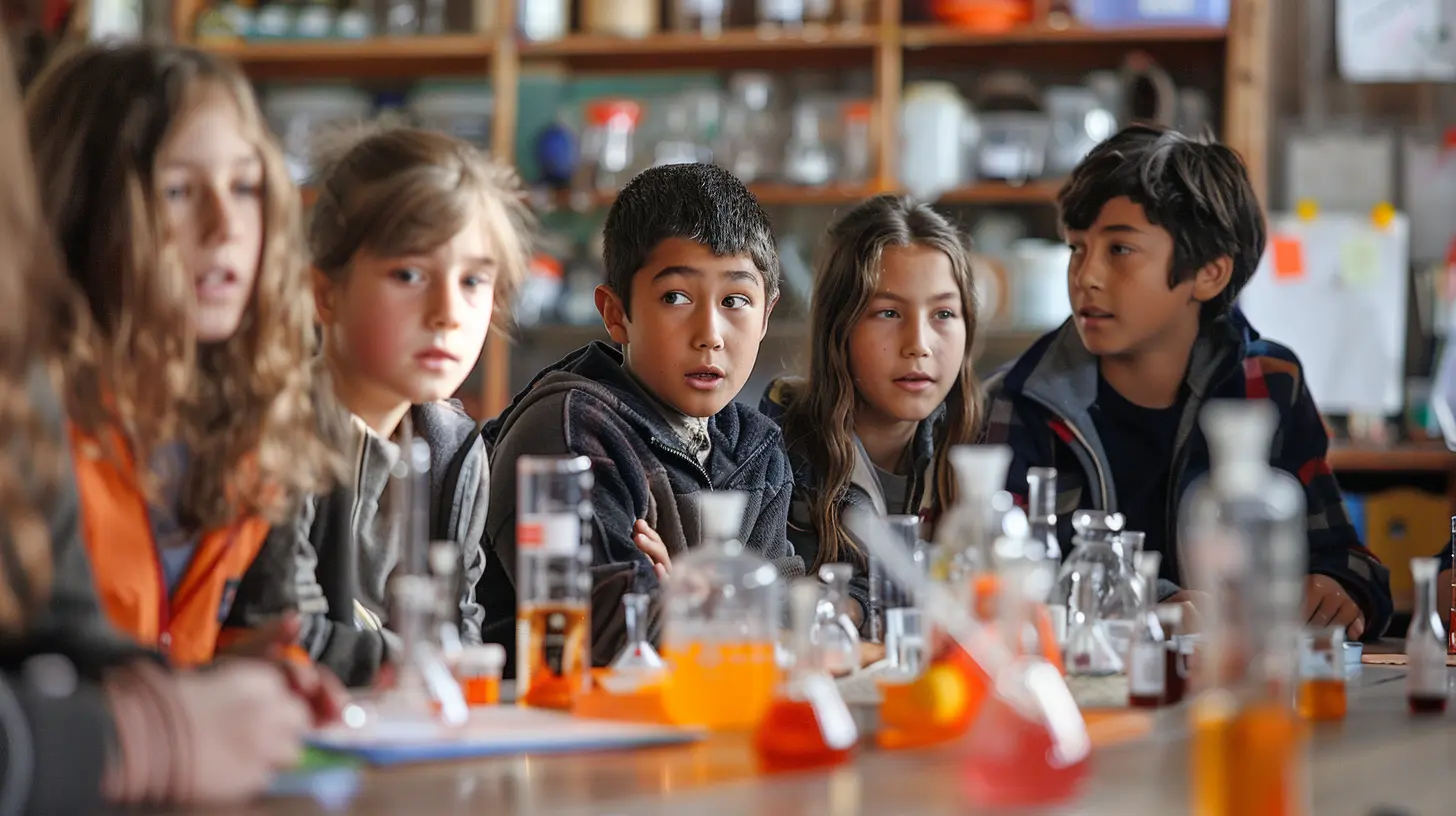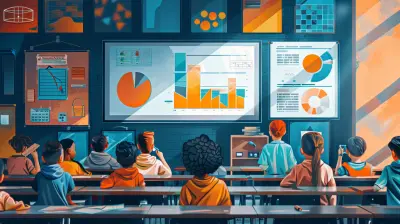Engaging Students in Real-World Problem Solving through Inquiry"
24 August 2025
Let’s be honest—how many students do you know who get SUPER excited about filling out worksheets or memorizing terms for a test? Probably not that many, right? And that’s okay! Because education is shifting. The traditional “sage on the stage” model is slowly being replaced with something a lot more exciting and relevant: real-world problem-solving through inquiry-based learning.
Now, that might sound like a mouthful, but it’s actually pretty simple—and incredibly powerful.
Let’s dive into what it really means to engage students in solving real-world problems through inquiry and how it can totally transform their learning journey.
What Is Inquiry-Based Learning, Anyway?
Imagine turning your classroom into a detective agency. Your students aren’t just sitting and listening—they’re asking questions, solving mysteries, and gathering clues. That’s basically inquiry-based learning in a nutshell.Instead of being passive recipients of information, students become active participants in the learning process. They investigate real-world issues, ask their own questions, gather data, and propose solutions. Sound more fun than grading another pop quiz? Thought so.
Why Real-World Problems Matter
Here’s the deal: when students see how what they’re learning connects to the real world, something magical happens. Their curiosity wakes up. Their motivation skyrockets. Suddenly, they’re not asking, “When am I ever going to use this?” because they’re already using it.Whether it’s climate change, food insecurity, or designing a more inclusive playground—real-world problems make learning relevant. And relevance? That’s the secret sauce.
The Power of Student Engagement
Let’s face it, engagement is everything. If students aren’t interested, they’re not learning. Period. But when you introduce real-world problems and let them take the lead with inquiry, engagement shoots through the roof. It’s like giving a child the keys to a cool new toy and saying, “Go figure this out.”When kids are allowed to explore, make mistakes, and try again, they’re not just memorizing—they’re transforming into thinkers, innovators, and changemakers.
Key Benefits of Inquiry and Real-World Learning
So, what exactly do students gain from this approach? Let’s break it down:1. Critical Thinking and Problem-Solving
Think of it as a mental gym. Inquiry-based learning flexes those critical thinking muscles hard. Students learn to analyze situations, consider multiple solutions, and make informed decisions—skills they’ll need in every part of life.2. Collaboration and Communication
Real-world problems usually aren't solved in isolation. Whether students are working in teams or presenting their ideas, they’re learning how to communicate clearly and collaborate effectively. Yes, even with that kid who never stops talking.3. Ownership of Learning
When students choose the questions they want to answer, they take more ownership of the process. Suddenly, it's not about earning a grade—it's about solving something that matters to them.4. Real-World Readiness
This type of learning helps students build transferable skills that apply beyond the classroom. Critical thinking, research, communication, creativity—it’s like a toolkit they’ll carry into college, careers, and life.Simple Steps to Make It Happen
Alright, you’re convinced. Now what? Let’s walk through a simple plan to implement inquiry-based, real-world problem solving in any classroom—without losing your mind.Step 1: Start with a Big Question
The best inquiries often start with a “messy” question—one that doesn’t have just one right answer. Ask something like:- How can we reduce plastic waste in our school?
- What’s the best way to design a community garden?
- How can we make our community more inclusive?
These kinds of questions are open-ended but focused, encouraging students to dig deeper.
Step 2: Let Students Take the Lead
This part can feel scary—letting go of control—but it’s essential. Let students research, form hypotheses, test out ideas, and analyze results. Be their guide, not their boss.Think of yourself as the GPS. You’re there to help them get back on track if they get lost, but they’re driving the car.
Step 3: Provide Resources and Guidance
You don’t need to give students all the answers, but make sure they have the tools to find them. That could mean access to articles, interviews with experts, or community field trips. Keep the support light but meaningful.Step 4: Encourage Collaboration
Group work is where the magic happens. Let students assign roles, share responsibilities, and learn from each other’s perspectives. Conflict is part of it too—learning how to deal with it is an unexpected bonus.Step 5: Share and Reflect
At the end of the inquiry cycle, let students present their solutions. This could be a poster, a presentation, a video, or even a community proposal. And don’t skip reflection—ask what worked, what didn’t, and what they’d do differently next time.Cool Classroom Examples
Need a little inspiration? Here are a few real-life examples of inquiry in action:🧠 Middle School Science: Fighting Local Pollution
Students teamed up to analyze water samples from local streams, researched pollutants, and created presentations to share with city officials. Real research, real impact.🌱 High School Environmental Studies: Designing a Sustainable School
Students conducted energy audits of their school, calculated carbon footprints, and proposed green initiatives like composting and LED lighting. Talk about student-led change!⚕️ Elementary Social Studies: Solving a Health Crisis
Third-graders learned about access to healthcare through story-based inquiry. They then raised funds to send care packages to under-resourced communities. Compassion meets action.Tips to Keep It Real (and Fun)
Let’s be real—implementing inquiry-based learning takes a little planning, but it doesn’t have to be overwhelming. Here are a few pro tips:- Start small: Don’t jump headfirst into a month-long project. Try a mini-inquiry over a few days first.
- Use local problems: Make the problem personal and local—it hits harder and feels more doable.
- Celebrate creativity: Let their solutions be wild, weird, or wonderful.
- Model curiosity: Ask big questions yourself. Show them that grown-ups are still learning too.
What About the Standards?
Yep, standards still matter. But guess what? Inquiry-based learning can hit them all—math, science, literacy, and social studies. It's not about ditching academic goals; it's about reaching them in more engaging, relevant ways.So, yes, your students can explore real-world issues and still prep for those end-of-year assessments. Two birds, one creative stone.
Encouraging a Growth Mindset
When students dive into a challenging, real-world problem, they’re going to hit roadblocks. And that’s actually awesome. Why? Because those moments are where the growth happens.They learn that failure isn’t something to fear—it’s just data. A clue. A stepping stone. This kind of mindset is priceless, and it sticks with them way past graduation.
Bringing It All Together
The truth is, inquiry-based, real-world problem solving isn’t about adding more stuff to your already-packed plate. It’s about changing how we serve the meal. Instead of spoon-feeding information, we’re inviting students to come into the kitchen, pick the ingredients, and cook up something extraordinary.They get curious. They get creative. And they get confident.
At the end of the day, we all want the same thing—for students to leave our classrooms not just smarter, but empowered. Ready to tackle whatever the world throws at them.
And guess what? Real-world inquiry is how we get there.
So next time you’re planning a lesson, ask yourself: What real problem could my students help solve?
You might be surprised by what they come up with.
all images in this post were generated using AI tools
Category:
Inquiry Based LearningAuthor:

Olivia Lewis
Discussion
rate this article
1 comments
Celeste McIlwain
This article effectively highlights the importance of inquiry-based learning in fostering student engagement with real-world problems. By encouraging critical thinking and collaboration, educators can cultivate essential skills that prepare students for future challenges, making learning both relevant and impactful. Great insights!
September 7, 2025 at 2:35 AM

Olivia Lewis
Thank you for your thoughtful feedback! I'm glad you found the article’s emphasis on inquiry-based learning and its role in developing critical skills valuable.


